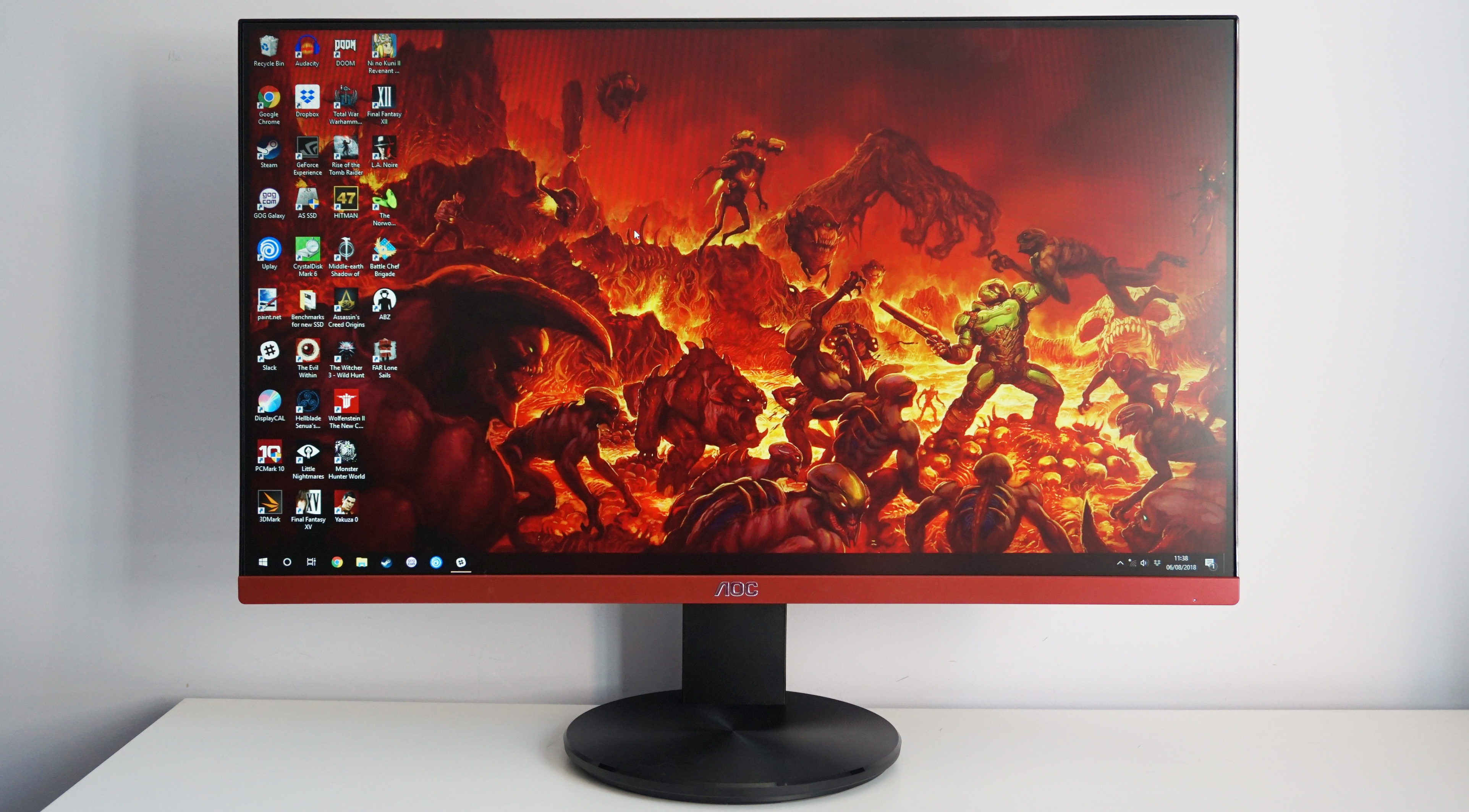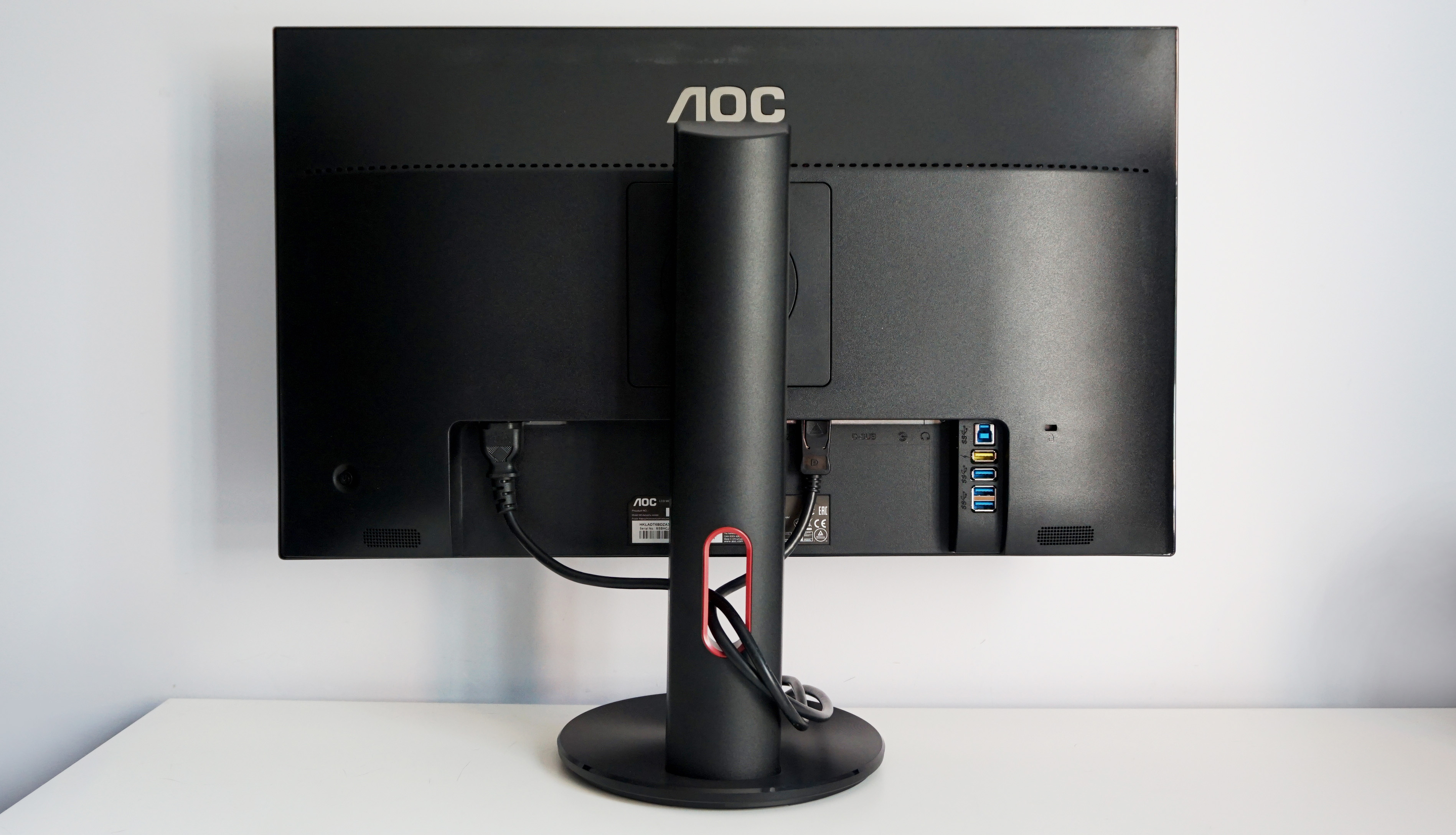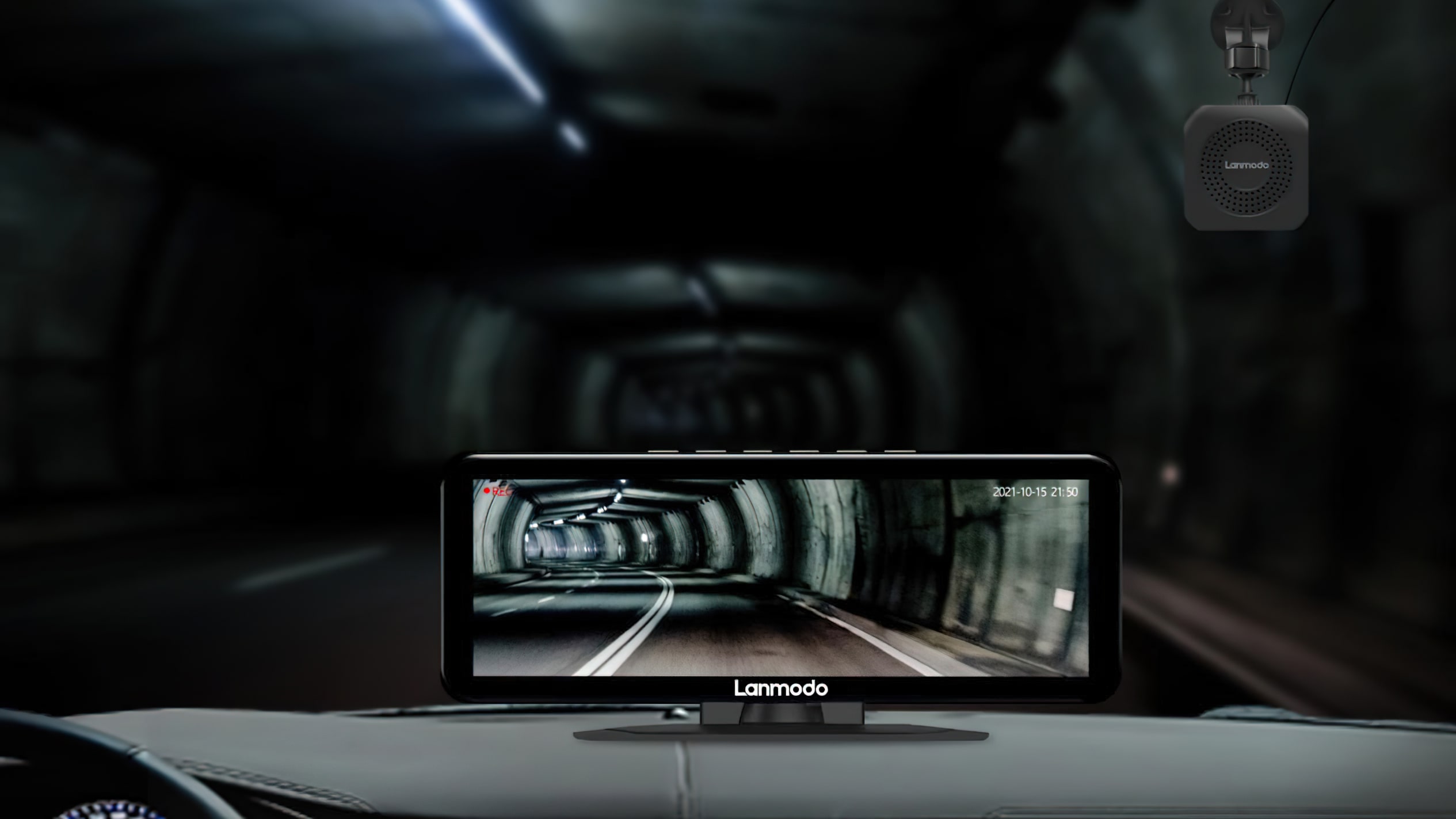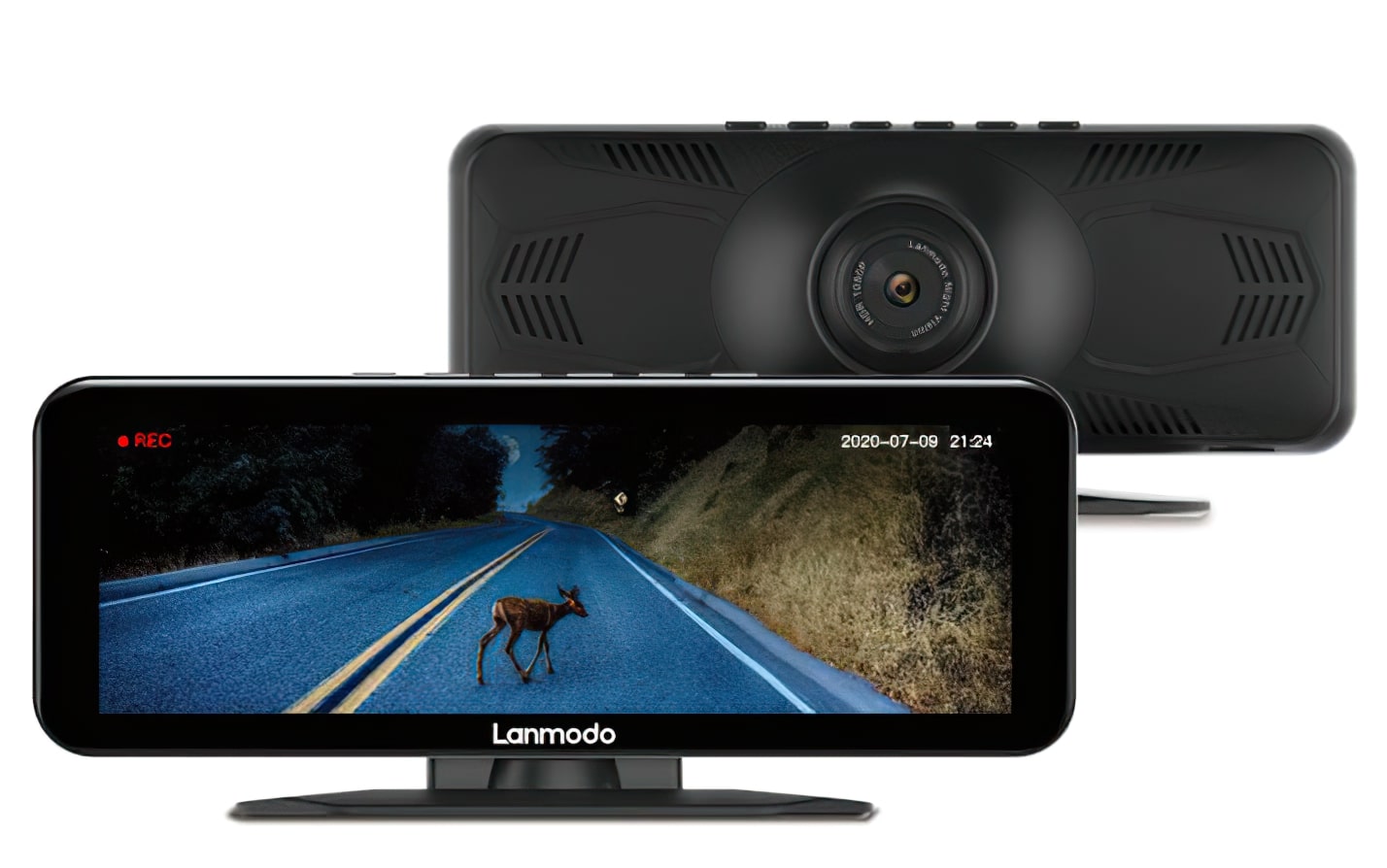
The AOC G2590PX is the most recent model of the wonderful AOC G2460PF. Now with a slightly greater display screen and a sleeker, extra fashionable design, I used to be completely satisfied this 1920×1080, 144Hz, AMD FreeSync show can be an absolute shoo-in to exchange the G2460PF as one among my best gaming monitor suggestions for 2018. Sadly, it will seem my confidence was misplaced.
At first look, the G2590PX appears each bit the improve the G2460PF deserves. Its boxy, plasticky bezels have now been changed by a stunning edge-to-edge body that actually enhances the dimensions of its modest 24.5in display screen, its cheap-looking, clip-on cable tidy is now absolutely built-in into the G2590PX’s newly height-adjustable stand, and its four-port USB2 hub has been beefed up with a four-port USB3 hub as an alternative, making its considerably irksome worth enhance to a not-so-budget-friendly £229 / $300 really feel all of the extra justified.
When I turned it on, nonetheless, my coronary heart sank. Not solely was there a noticeable graininess to the G2590PX’s TN panel, like its pixels have been all ordered in seen columns, however I might already inform its color accuracy wasn’t going to be good. Out of the field, the G2590PX had a really pale, washed out form of pallor, and my suspicions have been confirmed once I examined it with my X-Rite i1 Display Pro calibrator.
Despite measuring a really respectable peak brightness of 340cd/m2, its black stage was an appalling 2.12cd/m2. Most TN panels handle someplace within the 0.10-0.50cd/m2 area (the nearer to 0.00cd/m2, the higher), however this was simply plain ridiculous. To make issues worse, its distinction ratio got here out as a measly 160:1.
This was to this point off the G2460PF’s vastly superior measurements that I grew to become satisfied there have to be some rogue settings at play, so I fired up the G2590PX’s onboard menu system to research. Credit the place it’s due, AOC’s little five-way directional management nubbin around the again is an immense enchancment on attempting to get your head across the G2460PF’s particular person buttons operating alongside the decrease bezel, however the menu’s UI might nonetheless do with a much-needed spruce as much as make it simpler to make use of.
Still, I breathed a small sigh of aid when I discovered there have been certainly some villainous sport settings in place that have been producing such crippling outcomes – primarily, the monitor’s Shadow Control choice. Set to 50 by default, even simply dropping this all the way down to 40 noticed an instantaneous enchancment. Its black stage fell to a way more respectable 0.46cd/m2, and whereas its most brightness topped out at 275cd/m2 at this setting, I’d take its improved distinction ratio of 596:1 over these further 65cd/m2 of brightness any day of the week.
Admittedly, a distinction ratio of barely 600:1 nonetheless isn’t good, even by funds monitor requirements, and pales compared to the G2460F’s measurement of 906:1. A excessive distinction ratio is necessary if you’re taking part in video games, because it means you’re capable of see extra shadow element when a scene transitions from mild to darkish. If distinction is low, shadow areas simply appear to be a giant, flat, monochrome blob, devoid of depth and element, and it makes it more and more troublesome to identify issues that may be lurking there.

You get a good variety of ports with the G2590PX, together with one VGA, one DisplayPort 1.2, two HDMI 1.four inputs, separate headphone and microphone jacks and a four-port USB3 hub.
Case in level: the opening cutscene of Little Nightmares. That opening scene of swirling mist was decreased to clunky, distinct bands of shadow on the G2590PX, which doesn’t precisely do wonders for sustaining the sport’s spooky environment. Yes, there’s at all times the choice of elevating the monitor’s total distinction, however I discovered something increased than its default 50% did equal harm to its total image high quality, making every part too brilliant and troublesome to see.
I attempted reducing the Shadow Control additional to see if this improved issues, however this solely made the display screen even dimmer and lowered the distinction ratio to 471:1. The solely factor that managed to push it a little bit increased was altering the display screen’s Gamma settings – however even this solely acquired me a most distinction ratio of 614:1. In quick, the G2590PX’s distinction is a bit pants.
I wasn’t overly impressed by the G2590PX’s color accuracy both. Using the monitor’s default Normal color temperature setting with Shadow Control on 40, my i1 DisplayPro returned an sRGB color gamut rating of simply 88.5%. Admittedly, this isn’t terrible by TN requirements, nevertheless it’s additionally nowhere close to pretty much as good because the G2460PF’s sRGB protection of 95%.
I managed to pump it up a bit by switching over to the User color temperature profile and dropping the inexperienced worth by 4 to carry it in step with its purple and blues, however I nonetheless couldn’t get something increased than an total sRGB determine of 92.3% after I’d completed calibrating it.
Perhaps I’m being a bit exhausting on the G2590PX. In the grand scheme of issues, 92.3% sRGB continues to be fairly respectable as far funds displays go, and that hole of three% is hardly going to make an enormous distinction when it within the flesh. You’re nonetheless getting that pretty 144Hz refresh price for tremendous clean gaming as nicely (supplied you’ve acquired a beefy sufficient graphics card to take advantage of it at 1920×1080, after all), and people with AMD graphics playing cards can nonetheless benefit from its adaptive FreeSync tech, which helps to remove screen-tearing by robotically adjusting the monitor’s refresh price to the variety of frames being spat out by your GPU.
Indeed, if the G2590PX’s distinction ranges weren’t so horrible, I’d be tempted to recommend this as an (virtually) like-for-like substitute as soon as the £209 / $197 G2460PF goes correctly end-of-life. As it stands, although, the quantity of faff it takes to get the G2590PX right into a vaguely acceptable state (and even then not a reasonably underwhelming one) means it finally falls wanting that coveted advice. For now, hoover up these G2460PFs when you can, as they in all probability gained’t be round for very for much longer.




